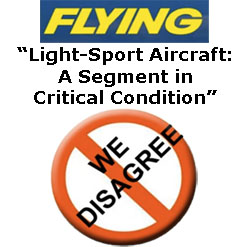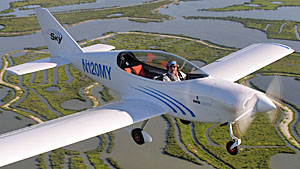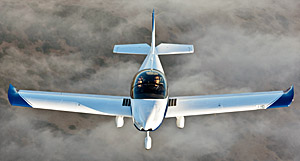

Flying magazine has often done great reporting as in their earlier articles about FAA’s oversight of the LSA sector. Graphic prepared by Flying magazine



It is true that a pilot of one type aircraft may not know much about nor (therefore) care much about another type aircraft. Ultralight pilots and turbine pilots may not seem to have much in common. Sailplane pilots and crop dusters, likewise. Powered parachute enthusiasts seem on the opposite side of the spectrum from airline pilots. Yet, regardless of our interests — or even the country in which we live — pilots as a whole are more alike than different in one critical way: we all love flying and we treasure the freedom and beauty flying can provide. So, why do some aviation groups disparage other groups? Why do fixed wing and rotary wing or powered and unpowered pilots sometimes engage in heated arguments? The reasons are many and as varied as humans are different. Fine … we have to accept that we are different. Yet should editors and aviation leaders act more professionally? I think so.
Recent aviation editorials have questioned the value and viability of Light-Sport Aircraft. Other than to create controversy to boost readership or viewership, I can’t think of a good reason why one editor blasts a group … at least without good cause. Is the LSA industry in “critical condition?” Can it be true that industry consensus standards “didn’t work?” Based on what information, I have to ask? I’d like to reply to those naysayers going negative on Light-Sport. I’d specifically like to briefly focus on the safety, utility, and the future of Light-Sport. If you wish to see our response in video form, click here.
SAFETY — Why do we certify aircraft? Why do companies institute quality control? Why do we have detailed documentation of manufacturing processes? All these efforts attempt to bring safety to airplane operations. Are LSA perfectly safe as a result? No. Yet FAA officials repeatedly refer to LSA safety with this word: “Acceptable.” Safety can always be better but to say industry consensus standard “didn’t work” is a wrongheaded value judgement, I believe. Indeed, FAA is sufficiently impressed that ASTM committee F44 formed recently to do for Type Certified aircraft what the F37 committee achieved for Light-Sport. Evidently FAA does not agree that industry consensus standards “didn’t work.”
UTILITY — We will soon post a video about LSA being used in one of the harshest of aviation environments: flight training. We interviewed several producers who cited multiple examples of LSA with 1,500, 3,000, even 4,000 hours and more, all acquired in flight instruction. Some had 10,000 or many more landings yet they’re holding up well (with good maintenance, of course). They also stated that economically, both from operation cost and purchase considerations, LSA make money for flight school operators. In other tough duty, several LSA have successfully circumnavigated the Earth. Obviously, LSA are reasonably durable and can be used to fly long distances.
THE FUTURE — The first LSA came on market less than eight years ago, so it seems a bit soon to say the LSA market “will never be strong.” Did the new segment solve all of aviation’s growth problems? No. Will it, in time? Perhaps not, though maybe. Was that ever a realistic assumption, given that aviation has been working to solve the growth problem for decades? Meanwhile, the incredible diversity of Light-Sport are offering current pilots a broad variety of choices and have indeed brought new people to aviation. So, rather than going negative about any one class of aircraft, I urge aviation leaders to be the professionals they are and to jointly among all aviation sectors seek solutions for aviation outreach. Throwing darts at one another isn’t what’s needed. Aviators with an audience can — and should — do better, in my humble opinion!
In the interest of fairness and balance, I invite you to read the original Flying article and make your own judgement about the editor’s thoughts. Meanwhile, thanks for considering our view.


Leave a Reply